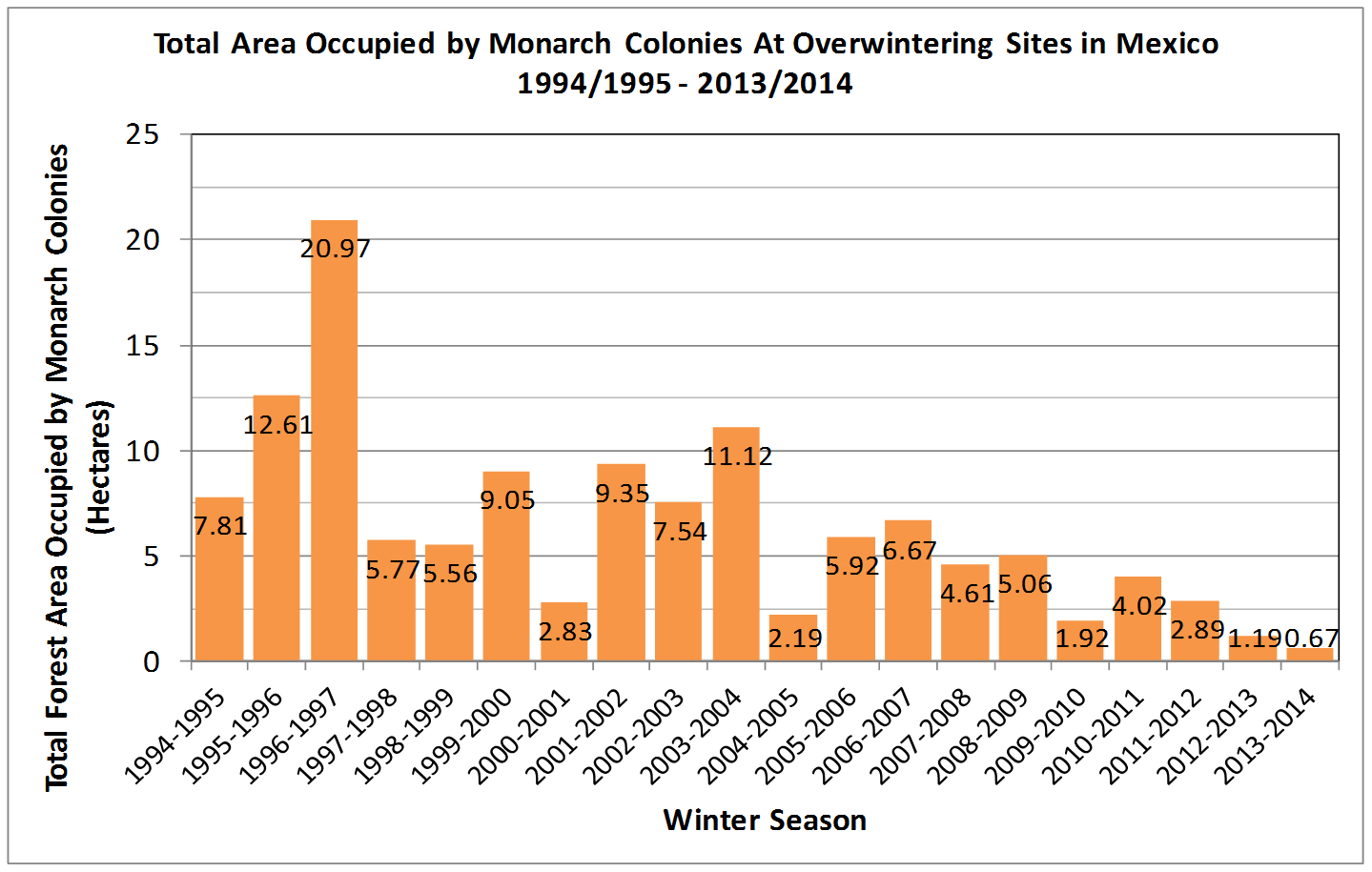“The lowest number of monarch butterflies ever recorded in their Mexican winter home has experts worrying about the future of the epic monarch migration. A new report by the World Wildlife Fund and two Mexican agencies says this year’s precipitous plunge in monarch numbers is due to the loss of the insect’s main food: milkweed. Loss of the plant’s habitat to urban sprawl and expanding agriculture is said to be literally starving the insects to death. Recent bad weather hasn’t helped.
The black-and-orange iconic butterflies now cover only 1.65 acres in the pine and fir forests of Michoacan state, west of Mexico City. That’s compared to almost 3 acres last year and more than 44.5 acres at the recorded peak in 1995.
Experts say the long-term decline in the butterfly’s population can no longer be due to brief and unusual weather conditions. “The main culprit is now [genetically modified] herbicide-resistant corn and soybean crops and herbicides in the USA,” which “leads to the wholesale killing of the monarch’s principal food plant, common milkweed,” said Sweet Briar College entomologist Lincoln Brower. The extreme drought in the U.S. corn belt during the summer of 2012 also wiped out huge numbers of milkweeds. Elizabeth Howard of Journey North says that was a fatal blow to many of the iconic fliers.
Monarchs typically live only four to five weeks, except for the generation that emerges in late summer. That’s the one that migrates the entire way southward to the species’ wintering grounds in Michoacan” (source).
“How the species manages to return to the same overwintering spots over a gap of several generations is still a subject of research; the flight patterns appear to be inherited, based on a combination of the position of the sun in the sky and a time-compensated Sun compass that depends upon a circadian clock based in their antennae. New research has also shown these butterflies can use the earth’s magnetic field for orientation. The antennae contain cryptochrome, a photoreceptor protein sensitive to the violet-blue part of the spectrum. In presence of violet or blue light, it can function as a chemical compass, which tells the animal if it is aligned with the earth’s magnetic field, but it cannot tell the difference between magnetic north or south. The complete magnetic sense is present in a single antenna” (source).
Editor’s note: The main source for this material was “Earth Gate – A Diary of the Planet” – which provides weekly snippets of news items related to Geography and which is featured on our web site.




